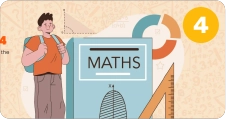Join us as we uncover the factors of 30, revealing fascinating connections and hidden secrets. Get ready to be amazed by the wonders of this unique number.
In mathematics, a factor of a number is a number that divides evenly into that number. For instance, let’s consider the number 10. Its factors are 1, 2, 5, and 10, as each of these numbers can be divided into 10 without leaving a remainder.
Positive factors of 30
30
/ \
1 30
/ \ / \
1 30 2 15
/ \ / \
2 15 3 10
/ \ / \
3 10 5 6
/ \
5 6
The positive factors of 30 are the numbers that divide evenly into 30 without leaving a remainder. These factors provide valuable insights into the divisibility patterns of 30, helping us understand its mathematical properties and applications. By exploring the positive factors of 30, we gain a deeper understanding of its divisibility and can apply this knowledge to various problem-solving scenarios.
Recommended Reading: FACTORS OF 52: A FUN AND EASY GUIDE
Negative factors of 30
-30
/ \
-1 -30
/ \ / \
-1 -30 -2 -15
/ \ / \
-2 -15 -3 -10
/ \ / \
-3 -10 -5 -6
/ \
-5 -6
Negative factors of 30 are numbers that, when multiplied by a negative value, equal 30. We can understand how divisibility works with negative numbers by exploring these factors. Learning about the negative factors of 30 helps us uncover interesting patterns and relationships between negative numbers and 30. Dive into these factors to better understand how division works with negative values.
There are eight factors of 30. These factors can be used in various ways in math and other fields.
Prime Factorization of 30
Prime factorization of 30 breaks down the number 30 into its prime factors. Prime factors are prime numbers that divide the given number evenly without leaving a remainder.
To find the prime factorization of 30, we divide it by the smallest prime number, 2. Since 30 is divisible by 2 without leaving a remainder, we continue dividing until we can no longer split by 2.
30 ÷ 2 = 15
Now, we move on to the following prime number, which is 3. We divide 15 by 3.
15 ÷ 3 = 5
At this point, we have obtained the prime factorization of 30. The prime factors of 30 are 2, 3, and 5.
So, the prime factorization of 30 can be written as:
30 = 2 * 3 * 5
This means that 30 can be expressed as the product of these prime factors. Prime factorization helps us understand the fundamental building blocks of a number and is useful in various mathematical calculations and problem-solving situations.
Factors of 30 by Division Method
To find the factors of 30 using the division method, we divide 30 by different integers and check if there is no remainder. If there is no remainder, those integers are the factors 30. Let’s go through the process step by step:
- Divide 30 by 1:
Result: 30 (Factor = 1, Remainder = 0) - Divide 30 by 2:
Result: 15 (Factor = 2, Remainder = 0) - Divide 30 by 3:
Result: 10 (Factor = 3, Remainder = 0) - Divide 30 by 5:
Result: 6 (Factor = 5, Remainder = 0) - Divide 30 by 6:
Result: 5 (Factor = 6, Remainder = 0) - Divide 30 by 10:
Result: 3 (Factor = 10, Remainder = 0) - Divide 30 by 15:
Result: 2 (Factor = 15, Remainder = 0) - Divide 30 by 30:
Result: 1 (Factor = 30, Remainder = 0)
Therefore, the factors of 30 obtained through the division method are 1, 2, 3, 5, 6, 10, 15, and 30.
Conclusion
In this blog post, we explored the factors of 30. We learned that eight factors of 30 can be used in various ways in math. We also learned that elements can be used to simplify fractions, find the least common multiple of two numbers, and determine the number of ways to arrange a group of objects.
Moonpreneur understands the needs and demands this rapidly changing technological world is bringing with it for our kids. Our expert-designed Advanced Math course for grades 3rd, 4th, 5th, and 6th will help your child develop math skills with hands-on lessons, excite them to learn, and help them build real-life applications.
Register for a free 60-minute Advanced Math Workshop today!













